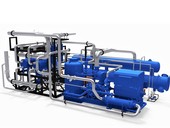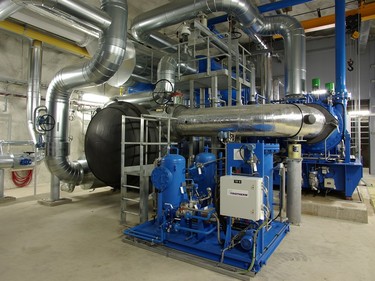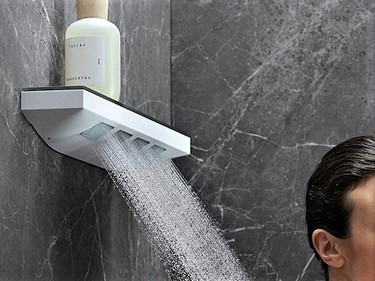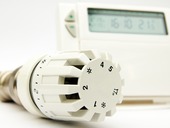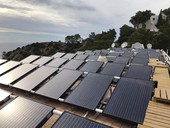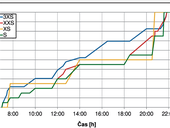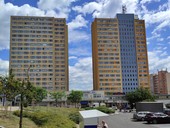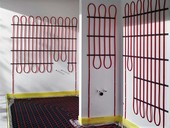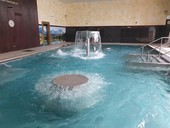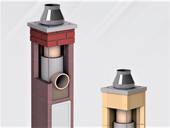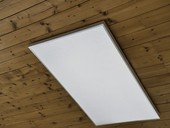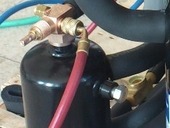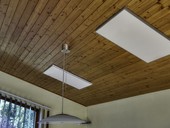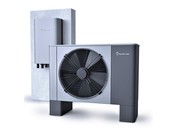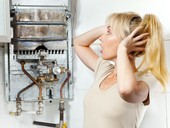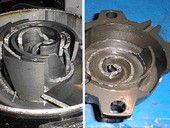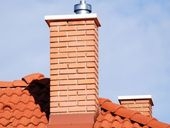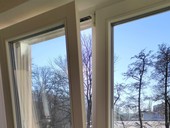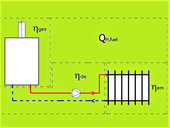High-temperature water-to-water compressor heat pumps with different refrigerants and configurations can be used in district heating systems operating at temperatures between 60 and 120 °C. Part 1 describes the development of installations in Europe and the current state of development, including an overview of the market offer.
Archiv článků od 28.1.2022 do 3.1.2023
High-temperature water-to-water compressor heat pumps with different refrigerants and configurations can be used in district heating systems operating at temperatures between 60 and 120 °C. Part 1 describes the development of installations in Europe and the current state of development, including an overview of the market offer.
The increasing incidence of “legionnaire's disease” caused by strains of Legionella pneumophila bacteria indicates an underestimation of the risk not only on the side of hot water production, but above all in its distribution through internal water supply. And what the public does not expect at all, even when distributing cold drinking water.
The article shows the ways of using load profiles of hot water heaters defined by Commission Regulations No 811, 812, 813 and 814/2013 to construct a cumulative hot water consumption curves. The authors point out errors commonly made by designers of hot water preparation systems in relation to the use of the load profiles. The conclusion of the article contains a comparison between consumption curves obtained with use of the hot water heaters’ load profiles and real measurements in different types of buildings.
Stricter ENB criteria and efforts to enforce a comprehensive view, not only the energy needs associated with housing, but also the place of residence, mode of transport, etc. show that the current situation is not systematically resolved. Meeting the new criteria in existing buildings, many of which have not even undergone basic insulation, will be very challenging, albeit necessary.
Conference paper debates results of researches into wall heating which are showed that placement of wall heating panels in interior walls results in a lower heat loss than placement in outer walls, and that wall heating can have equal or better energy-efficiency compared to floor heating and conventional radiators.
Thermal baths in Slovakia are producers of wastewater, which have considerable enegry potential. Wastewater often exceeds the maximum temperature that can be discharged to the recipient without harming the environment. In many cases, this requirement is not met, and swimming pool operators must face sanctions for environmental pollution. The aim of the paper is to present the possibilities of using the energy potential of wastewater, which would ensure its required temperature.
The paper focuses on the sizing of chimneys for fireplaces in which wood is burnt. Before the dimensioning itself the combustion equation and the derived equations for determining the flow of fire-wood and the flow of combustion air and gas are listed. At the end, the paper provides an example of calculation.
The first part described the real course of heating and electricity consumption by radiant panels of two family houses with different uses. In this part, the houses are compared in terms of the parameters of their indoor environment and in relation to the measured energy consumption and their energy intensity.
The article summarized overview of currently used refrigerants and termination dates consumption of prohibited refrigerants. In the past, refrigerant was used based on fully halogenated hydrocarbons (CFCs), later it was partially halogenated hydrocarbons (HCFCs), and currently are the fluorocarbons and mixtures (HFCs). The paper discussed important laws and regulations, which set out the requirements for the use of refrigerants.
The first part of the article describes the real course of heating and electricity consumption by radiant panels of two family houses with different approaches to their use. In the second part, the houses will be compared in terms of the parameters of their indoor environment in relation to the measured energy consumption and their energy intensity.
Ventilation infiltration in the form of leaking windows, doors is associated with unwanted heat leakage in cold periods. The size of the leakage depends on both the intensity of ventilation and the amount of energy contained in the air. The calculation should include not only the specific heat capacity of the dry air, but also the energy contained in the water vapor in the air.
zpět na aktuální články
